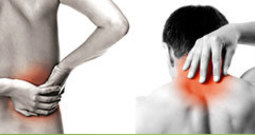
Many people enjoy gearing up for outdoor activities. Whether for hiking, camping, school or work, a backpack is a constant companion for many of us. When used correctly, backpacks are a safe and effective way to carry books, laptops and personal effects day-to-day as well as during travel or hiking.
However, carrying a backpack incorrectly can lead to muscle strains and problems with posture. Learning a few simple techniques to carry a backpack safely can help people of all ages to avoid unnecessary aches, pains and back problems.
A number of studies over the past 10 years have highlighted the negative effects that carrying a backpack can have on students. Back pain rates ranging from 20% to over 70% have been reported among students depending on their age and gender, with girls being more frequently affected than boys.
Furthermore, backpack-related pain is not restricted to the young. Studies in adult hikers have further suggested that backpack weight can affect posture and alter muscle activity in the legs, in addition to increasing back and shoulder discomfort. Fortunately, the risks of carrying a backpack can be minimised by making small adjustments to their day-to-day use.
Keep it light
Firstly, keep backpacks as light as possible. Try to avoid carrying unnecessary items, especially if they are heavy, and encourage your children to do the same. Loads greater than 10% of body weight can change spinal alignment and normal muscle function. Keeping backpacks light is especially important in children, because early back pain may be related to back problems in adulthood. Higher weights do not necessarily cause back pain, but they increase the risk. In college students, a 4kg (8.8lb) increase in the weight of the typical backpack load was associated with a 25% increase in the likelihood of experiencing lower back pain.
Also remember to respect the weight of your pack when you put it on and take it off. Bending at the knees, rather than the waist, when picking up a heavy backpack reduces strain on the lower back, and you should avoid excessive twisting when placing your arms through the straps.
Make it fit
Next, adjust the backpack to achieve the best possible fit and weight distribution. Backpack weight should be distributed over the mid- to lower back to minimise effects on posture. Modify the strap lengths so that the pack fits securely but does not sit too high on the back, and most importantly feels comfortable to you. Make sure the backpack is worn over both shoulders, not just one, to prevent one sided weight distribution. Additionally, arrange the items in your or your child’s backpack with the heaviest weight at the bottom and in such a way as to prevent items in the pack from shifting.
New features
If your backpack includes a waist belt, use it! The waist belt helps to distribute weight more evenly across the back and onto the hips. Other backpack features to consider in a new pack are padded straps and back support for increased comfort and better weight distribution. Separate compartments within a backpack can also help prevent items in the pack from moving. If you need to carry a heavy backpack or any backpack for a long period of time, consider using a backpack with wheels on the bottom, which allows it to be pulled along rather than carried.
Our professional physiotherapists at Physio Med can design a tailor made exercise programme to reduce your pain as well as ensuring that the risk of you hurting yourself again is reduced by providing exercises which strengthen your back and deep abdominal muscles, improving your posture and keeping your body in better balance.
For more information, please feel free to get in touch:
Tel: 0113 229 1300
Visit: Contact Us Form



